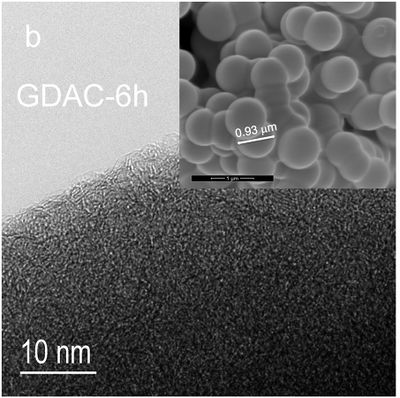Hydrothermal Carbonization: Difference between revisions
Jump to navigation
Jump to search

m (Minor Text Formatting Fix) |
m (Minor Text Formatting Fix) |
||
| Line 14: | Line 14: | ||
=Internal Links= | =Internal Links= | ||
*[[Biochar]] (The term used for using [[Charcoal]] / Bio- [Petcoke]] or [[Hydrochar]] in soil such as [[Synthetic Amazonian Black Earth]] ) | *[[Biochar]] (The term used for using [[Charcoal]] / Bio- [[Petcoke]] or [[Hydrochar]] in soil such as [[Synthetic Amazonian Black Earth]] ) | ||
*[[Torrefaction]] | *[[Torrefaction]] | ||
*[[The Biochar Economy]] | *[[The Biochar Economy]] | ||
Revision as of 18:58, 16 September 2024

Carbon nanoballs made from glucose via hydrothermal carbonization, that have been processed with CO2 for 6 hours to change surface properties. SEM image from University of Tartu.
Basics
Hydrothermal Carbonization (HTC), also known as "hydrochar", is a form of thermal biomass conversion that involves moderate temperatures and pressures over an aqueous solution of biomass in a dilute acid for several hours. One advantage of the HTC process over conventional dry-thermal pre-treatments is the ability to handle wet feedstock without pre-drying. The resulting "biocoal" has physiochemical properties that are very different from biochar and can be used as a soil amendment (similar to biochar), bioenergy, and the remediation of wastewater pollution.
Open Source Hardware Needs
- Pressure Vessel
Internal Links
- Biochar (The term used for using Charcoal / Bio- Petcoke or Hydrochar in soil such as Synthetic Amazonian Black Earth )
- Torrefaction
- The Biochar Economy
